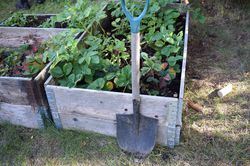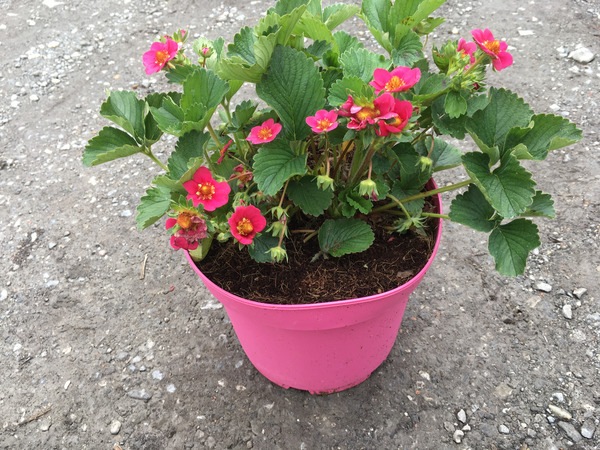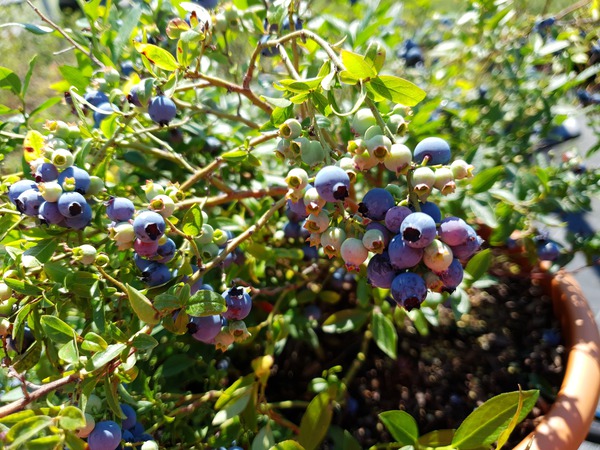 But how should the self-sufficiency trend now be better addressed in the production and supply of edibles? How, above all, should gardeners be helped to become practical (partial) self-supporters (and not just be amazed by Youtube videos)? Of course, we cannot offer detailed instructions here; each producer's customer profile of resellers also gives rise to different possibilities. However, we strongly recommend to address some of these things in the sales talk with resellers and to offer services in the implementation. Of course, we understand the difficulty of this endeavour, as even producers usually only sell indirectly to end consumers....
But how should the self-sufficiency trend now be better addressed in the production and supply of edibles? How, above all, should gardeners be helped to become practical (partial) self-supporters (and not just be amazed by Youtube videos)? Of course, we cannot offer detailed instructions here; each producer's customer profile of resellers also gives rise to different possibilities. However, we strongly recommend to address some of these things in the sales talk with resellers and to offer services in the implementation. Of course, we understand the difficulty of this endeavour, as even producers usually only sell indirectly to end consumers....
1. provide more, not less, information with the plants
Labels have become colourful, and sometimes downright screaming, but at the same time meaningless companions of plants. This makes them interchangeable, and not infrequently dysfunctional (except perhaps for an immediate advertising effect at the POS). Often one sees chain brands, along with supposedly confidence-gaining certificates in multipacks, without the decisive advantages of the plants being sold along with them. The consumer is systematically underestimated. Half a dozen pictograms leave the consumer in the dark about how to really and practically grow the edibles now and how to get the maximum yield of high-quality fruit. Write more about how to really do it, fight for every line, this is exactly what consumers are desperately looking for - and you shouldn't lose them to Google already at the physical POS...

Picture: Labels available at Lubera Edibles - in neutral design (right) or with Lubera® branding (left).
2. differentiate the offer
All edibles in the same 2l pot, with a comparably meaningless label, at best with a fancy brand ('concept') on a CC are not a strategy that will help in the future - but simply interchangeable. Reseller customers can buy such offers almost everywhere. The offers have to be differentiated in varieties and sizes, in composition, but also in terms of seasonality. It is a clear mistake to be content with early spring for fruit & berries, special offers are also needed for the bedding and balcony plant season, especially if we also want to win market share from the ornamental plant market. The newer assortments from Lubera breeding (e.g. The Lowberries®) provide this without any problems. Exclusive novelty assortments help to create a distinctive range. Pot colours, pot shapes and, for the most part, certified production systems are not sustainable product advantages - even if this view will probably not remain unchallenged.

Picture: Trying something different - pink flowering Double Pleasure® strawberry in a 5 litre pot.
3. selling the harvest
Whoever buys an edible plant does not buy it for its own sake, but to harvest. It is almost hair-raising to see how offers and advertisements show shrub berry plants in the open, but leave out the fruits, the harvest. Let's answer the most important questions of the customer: What can I harvest and when? And what is the easiest way to do that. Let's finally learn again that we are selling much more than a plant: namely its future yield and enjoyment!

Picture: Large plant that already has fruit set at the time of sale.
4. promotions instead of always-low prices
We have carried out various tests online and found that temporary promotions work much better than permanently low prices. You should also take advantage of this - or motivate your own customers to take advantage of it. The off-season in summer and early autumn in particular is a much underused time: not only are the producers' production costs effectively much lower here than with spring offers, but the consumer also has more time than in the overloaded spring. Some plants, especially strawberries, raspberries and blackberries, also grow much better in warm soil and with far fewer failures than in spring.
5. selling time
By producing larger plants we shorten the time until the first notable yield. Especially bush berries, i.e. currants, gooseberries, figs, first berries, blueberries, most wild fruits etc. in 5l pots come in full yield already in the first year after planting, because we do not deliver a young plant but a production-ready yielding plant. With larger and stronger plants we sell time, the end consumer gains at least 2 years with a 5l or 7l plant compared to a small plant in a 1.5 to 5l container. However, this advantage has to be sold actively, not to say aggressively: Do you want to harvest 4 times in 5 years or only 2 times?
